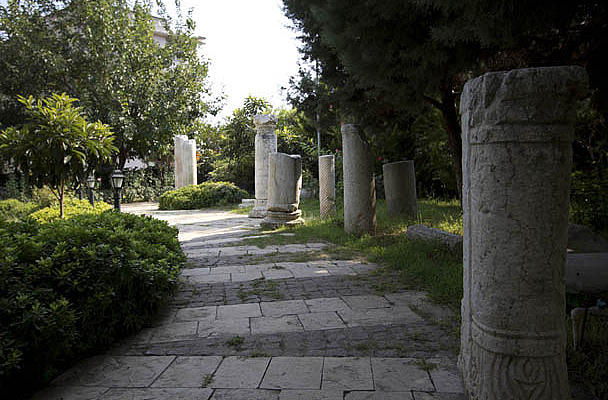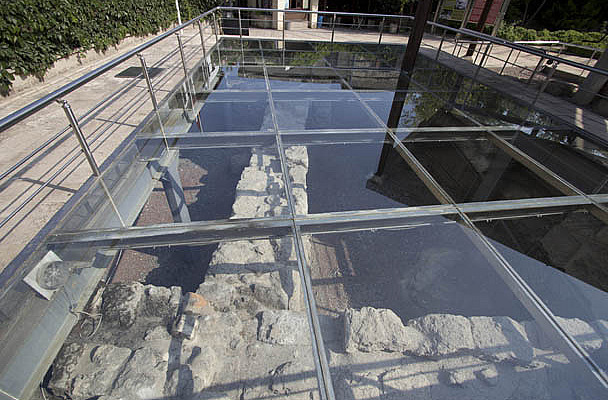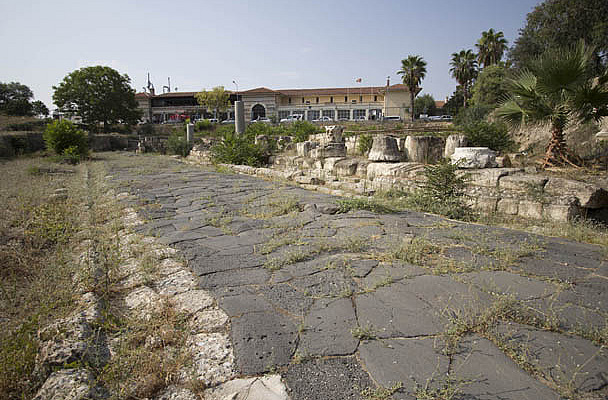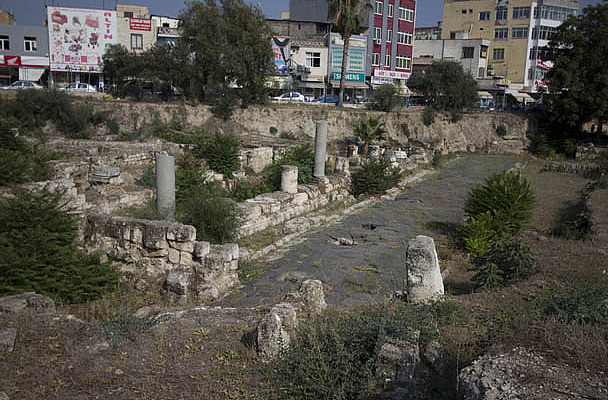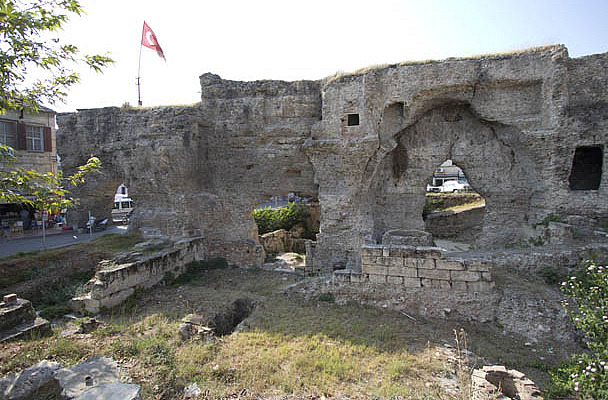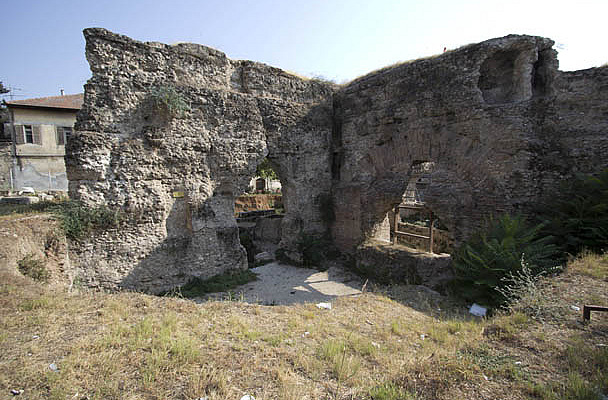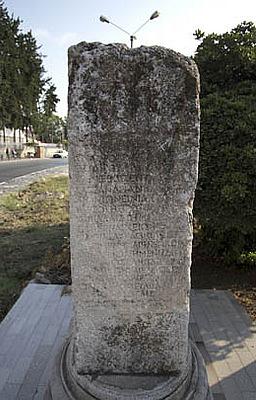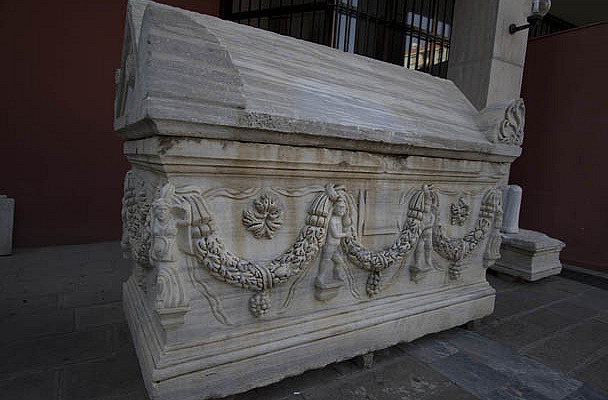Historical Background
Tarsus is a major city in the region of Cilicia near the north-eastern corner of the Mediterranean in southern Turkey. It lies inland about 10 miles and is situated near the Cydnus River. Because the Cydnus River emptied into a large nearby lagoon (Lake Rhegma), Tarsus had a sea port connecting to the Mediterranean. From archaeological findings, the origins of the city date back to the 3rd millennium B.C., and Tarsus is mentioned in discovered Hittite records during the 2nd millennium B.C. as well. After being destroyed in ~1200 B.C., the city was re-founded by Greek settlers. Tarsus and the region of Cilicia traded hands over the course of the following centuries from the Greeks (11th - 10th century B.C.), to the Assyrians (9th century B.C.), and then to the Persians (5th century B.C.). Tarsus is mentioned in the campaigns of the Assyrian kings Shalmaneser I (c. 1274/65-1245/35 B.C.), Sennacherib (705-681 B.C.), and Esarhaddon (681-669 B.C.). Xenophon (the Greek philosopher/historian who was a student of Socrates) mentioned that in the year 401 B.C. when Cyrus the Younger marched against Babylon, Tarsus was governed by King Syennesis in the name of the Persian Monarch (Anab. I.2.12).
Then with the defeat of the Persians at the hands of Alexander the Great in 333 B.C., Tarsus once again came under the rule of the Greeks. However when Alexander died in 323 B.C., Tarsus fell under the control of the Seleucids (Seleucius I Nicator was one of Alexander's generals who then became the king of the Seleucid Empire). Later when Antiochus IV Epiphanes (175-164 B.C.) became king of the Seleucid Empire, he renamed Tarsus – Antioch on the Cydnus – in his honor. But when Tarsus was given to Antiochis, Antiochus' concubine, the citizens of Tarsus were outraged and revolted against King Antiochus (2 Macc 4:30).
Down into the mid-1st century B.C. Tarsus continued to accrue wealth and popularity throughout the Mediterranean world. Though, by the year 67 B.C., Rome had taken control of the region but the Greek culture and customs had permeated the city and its people causing them to become Hellenistic (Greek-like), an effect which had occurred throughout most of Alexander's Empire as well.
Tarsus attracted many notable historical figures such as Cicero who lived in the city from 51-50 B.C. when he was proconsul of Cilicia, and even Julius Caesar is recorded as having made a specific stay in Tarsus in 47 B.C. (the city apparently was re-named Juliopolis in his honor). Another very notable historical event that happened in Tarsus is the illustrious meeting of Marc Antony and Cleopatra in 41 B.C. Even Shakespeare poetically elaborates on Plutarch's description of the eloquent beauty of Cleopatra as she sailed up the Cydnus River to meet Antony (Ant. Act 2/5, Scene 2/2).
Under the rule of the Romans, Tarsus continued to gain favor as a metropolitan city of grandeur. It is only natural with such prestige that Tarsus continue to be the capital of the region of Cilicia from where Roman governors would reside and administrate the affairs of the empire. Tarsus had built quite a name and reputation under the hand of Rome and it prospered and flourished well into the 3rd century A.D. Even Strabo (the Greek philosopher/historian - 64/63 BC – c. AD 24) gave high accolades to the city for its cultural development and residence of distinguished philosophers, poet, and linguists by stating how Tarsus “surpassed Athens, Alexandria, or any other place that can be named where there have been schools and lectures of philosophers” (Geo. 14.5.13).
Archaeological Significance
Like many ancient cities, modern cities are built directly on top of them. This is the case with Tarsus as well. But, not all has been lost. Several important archaeological findings remain visible for the public to see but many more exist under the work of archaeological specialists. For example, a large hippodrome is known to exist under the present Tarsus American College campus and a Roman theater has been identified nearby in a modern park. The most notable attraction would be “Cleopatra's Gate” (also called “St. Paul's Gate”), but it has no historical affiliation with either of them. It is actually a Byzantine archway from the 3rd - 4th century A.D. Toward the city center there is a well with the remains of an ancient Roman house beside it. The well is (of course) called “St. Paul's well” and the house is called “St. Paul's house”. Neither have any archaeological evidence for actually being associated with Paul himself. However, they are legitimate artifacts of the ancient city from Paul's time in the 1st century. In addition, just up the road a little ways there is the remains of a large bath house with archways still standing from the Roman period. Also, a large stone inscription was found dating from the time of the Roman Emperor Severus Alexander (222-235 A.D.) and is now standing near Cleopatra's Gate. The inscription is for the blessing/protection of the Imperial Temple and a benediction for the greatness of Tarsus in memory of Severus Alexander, Septimus Severus, Caracalla, and Hadrionus. However, the most significant finding has been 1st century Roman road. Approximately 200 ft. (60 m.) has been excavated. The road is made of black basalt and is cambered with an elaborate drainage system. The road is thought to have existed since the 2nd-century B.C. during the Seleucids and was then rebuilt by the Romans. There is also a courtyard with portico and excavations are continuing to find more houses, shops, and other buildings in the vicinity.
HOME SWEET HOME!...
Biblical Significance
Tarsus is mentioned in the Bible on several accounts but most notably as the birthplace of the Apostle Paul (as called Saul). Paul was born in Tarsus in c. 5-10 A.D. under the reign of Augustus Caesar when the Stoic philosopher Athenodorus, son of Sandon, was governor of Cilicia. Historically, many Jews migrated to the region of Cilicia and the city of Tarsus under the reign of Antiochus III (223-187 B.C.) during the period of the Seleucid Empire. So there existed a well-established community of Jews in Tarsus by the time of the 1st century.
Paul was born a Hellenistic Jew and a Roman citizen in Tarsus, likely through the political entourage of a relative who was a Roman citizen as well. Most often Roman citizenship was inherited from the father of the child. Even if the woman was a Roman citizen, if the father was not, the child would not inherit citizenship. Social status and legal perogatives were only bestowed through paternal lineage. Roman citizenship was not common in the 1st century but was growing rapidly in the generation preceding Paul's birth and into his own generation. It is estimated that there were 4.5 million Roman citizens around the time of Paul (Augustus, Res Gestae 2.8) and that there were ~40-55 million people in the Roman Empire.
During his conversion story, when the Lord Jesus gave instructions to Aeneas to find Saul (Paul) in the city of Damascus in the street called Straight, the Lord referred to Saul as being “from Tarsus”. In ancient culture, a person's hometown was commonly associated with their name as a way to identify the person. Countless examples abound in ancient literature and in Scripture where people are identified with the city of their birth, ancestry, or closest affiliation, e.g., Jesus of Nazareth, Simon of Cyrene, Joseph of Arimathea, etc. The hometown carried a social status with it and was often used to distinguish certain people from other people with the same name. Furthermore, the city surname also served as a signal for social prestige in some instances.
After Paul encountered the Lord Jesus and became his follower and disciple, he entered into Jerusalem and preached the name of Jesus boldly and debated with the Hellenists (Greek speaking Jews). The Hellenists were enraged and sought to kill Paul because they viewed him as a Jewish deserter and blasphemer. It was one thing to leave the Jewish faith and quite another to actively speak against it with the message of the gospel. But, the other disciples of Jesus learned of their insidious intentions and so they sent Saul home to Tarsus. However, Paul would not remain their long for when Barnabas was at Antioch and needed reinforcements for preaching the gospel, he left Antioch and went to retrieve Paul from Tarsus (Acts 11:25).
The most direct mention of the city of Tarsus occurs when Paul is arrested in Jerusalem and he uses his affiliation with the city of Tarsus as part of his personal pedigree to the commander for why he should be permitted to speak to the people (“I am a Jew and a citizen of Tarsus in Cilicia, which is an important city. Please, let me talk to these people” - Acts 21:39). That was not the only reason Paul expressed his relation to the city of Tarsus. He also mentioned that he was from Tarsus to reject the mistaken notion of the commander that he was a insurrectionist from Egypt who lead 4,000 assassins into the desert recently (Acts 21:38).
One other important occurrence of Tarsus in Scripture appears when Paul is again listing his pedigree and qualifications for why he should have permission to address the Jews in Jerusalem (Acts 22:3). He states that he was born in Tarsus but he grew up and was educated in Jewish law by the respected teacher Gamaliel in Jerusalem. In this instance, Tarsus served to highlight his reputable birth place, and Jerusalem served to promote his reputable education and upbringing. Paul further elaborates on his personal achievements and zealousness regarding Jewish law to elevate his status among his peers for reason of securing authority and respect from his audience.











